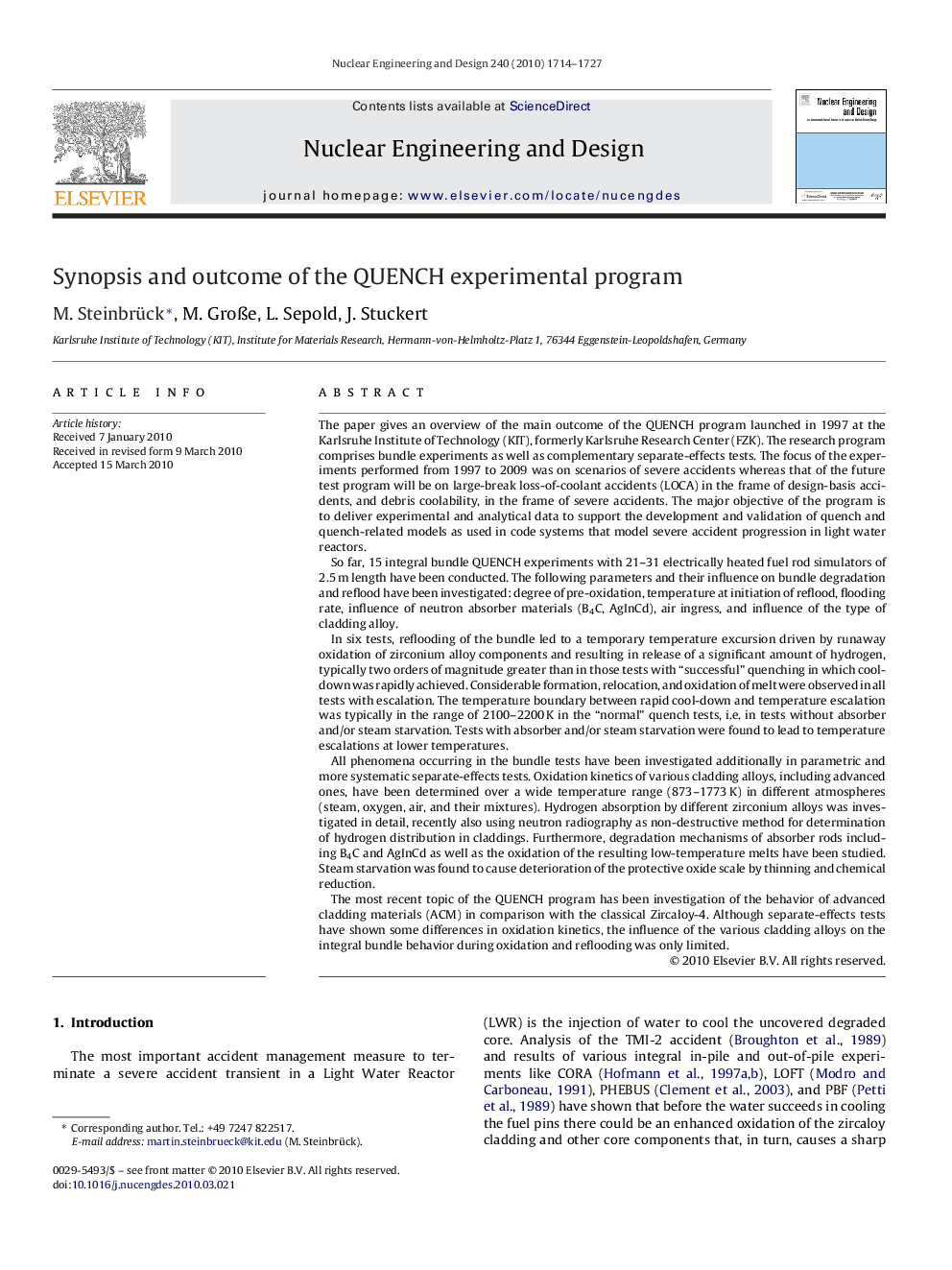| کد مقاله | کد نشریه | سال انتشار | مقاله انگلیسی | نسخه تمام متن |
|---|---|---|---|---|
| 298178 | 511778 | 2010 | 14 صفحه PDF | دانلود رایگان |

The paper gives an overview of the main outcome of the QUENCH program launched in 1997 at the Karlsruhe Institute of Technology (KIT), formerly Karlsruhe Research Center (FZK). The research program comprises bundle experiments as well as complementary separate-effects tests. The focus of the experiments performed from 1997 to 2009 was on scenarios of severe accidents whereas that of the future test program will be on large-break loss-of-coolant accidents (LOCA) in the frame of design-basis accidents, and debris coolability, in the frame of severe accidents. The major objective of the program is to deliver experimental and analytical data to support the development and validation of quench and quench-related models as used in code systems that model severe accident progression in light water reactors.So far, 15 integral bundle QUENCH experiments with 21–31 electrically heated fuel rod simulators of 2.5 m length have been conducted. The following parameters and their influence on bundle degradation and reflood have been investigated: degree of pre-oxidation, temperature at initiation of reflood, flooding rate, influence of neutron absorber materials (B4C, AgInCd), air ingress, and influence of the type of cladding alloy.In six tests, reflooding of the bundle led to a temporary temperature excursion driven by runaway oxidation of zirconium alloy components and resulting in release of a significant amount of hydrogen, typically two orders of magnitude greater than in those tests with “successful” quenching in which cool-down was rapidly achieved. Considerable formation, relocation, and oxidation of melt were observed in all tests with escalation. The temperature boundary between rapid cool-down and temperature escalation was typically in the range of 2100–2200 K in the “normal” quench tests, i.e. in tests without absorber and/or steam starvation. Tests with absorber and/or steam starvation were found to lead to temperature escalations at lower temperatures.All phenomena occurring in the bundle tests have been investigated additionally in parametric and more systematic separate-effects tests. Oxidation kinetics of various cladding alloys, including advanced ones, have been determined over a wide temperature range (873–1773 K) in different atmospheres (steam, oxygen, air, and their mixtures). Hydrogen absorption by different zirconium alloys was investigated in detail, recently also using neutron radiography as non-destructive method for determination of hydrogen distribution in claddings. Furthermore, degradation mechanisms of absorber rods including B4C and AgInCd as well as the oxidation of the resulting low-temperature melts have been studied. Steam starvation was found to cause deterioration of the protective oxide scale by thinning and chemical reduction.The most recent topic of the QUENCH program has been investigation of the behavior of advanced cladding materials (ACM) in comparison with the classical Zircaloy-4. Although separate-effects tests have shown some differences in oxidation kinetics, the influence of the various cladding alloys on the integral bundle behavior during oxidation and reflooding was only limited.
Journal: Nuclear Engineering and Design - Volume 240, Issue 7, July 2010, Pages 1714–1727